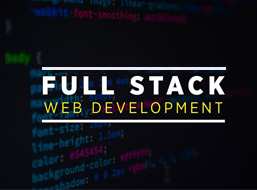ANGULAR 4 INTERVIEW QUESTIONS AND ANSWERS - Apponix Technologies
ANGULAR 4 INTERVIEW QUESTIONS AND ANSWERS
Angular 4 is the leading important course in the present time. Because it provides more job opportunities and have a good pay scale. Here is a list of Angular 4 Interview questions along with the answers. These questions and answers are prepared by Angular 4 professionals based on MNC companies' expectations. It is suitable for both the beginners and professionals at any level. These questions and answers will be helpful and useful for those who are preparing for the jobs
Angular 4 is the open-source JavaScript framework. It is mainly used for front-end web applications and Single Page applications.Apponix technologies has the most experienced trainers and IT professional tutors who are having work experience as a developer, designers, and debuggers. These questions are prepared after detailed analysis and it is frequently asked in the interviews of different MNC companies.
Here Are The Top 50 Interview Questions And The Tips In Facing The Interview.
1. What are the components of Angular?
Modules, component, services, templates, metadata.
2. What is CLI? How can it be used for Angular?
CLI means Command Line Interface. It is used to build the Angular apps using the form of nodes style modules.
3. What is the difference between constructor and ngOnInit?
Constructor works as default method in Typescript classes which is used for the initialization. ngOnInit is a specific method to Angular. It is used to define bindings in Angular.export class AppTest implements OnInit{ constructor(){ //called intially before the ngOnInit() } ngOnInit(){ //This called after the constructor and after the first ngOnChanges() } }
4. How DI (dependency injection) works in Angular?
Dependency Injection (DI) is a design pattern which makes code to write loosely coupled. Angular has its own DI framework. Through DI, the application will have service which will work based on other service.
5. What is ngFor directive?
It is used to display each item on the list in the template. Below is an example,
6. What is the difference between pure and impure pipe?
Pure pipe will get called whenever Angular detects the changes in the value or parameters which passed to pipe. Impure pipe will get called for every change in direction. The change in value or parameter is not a matter. Impure pipe gets called whenever there is a keystroke or mouse-move.
7. What is RxJS and what is the use of it?
RxJS is a library used to compose asynchronous and callback-based code in a functional, http client consume, and produce RxJS Observables. Below is an example,import { catchError, retry } from ‘rxjs/operators’; import { Observable, throwError } from ‘rxjs’;
8. What is Angular Router and its use?
Angular Router works as browser’s application navigation. It is used to navigate from one to another or next view based on applications' performance tasks.
9. What is the use of base href tag?
The base href tag is required to route application which should add element in index.htmlas the first child to indicate to compose other URL of application. Below is the snippet of the same.
10. What are the router imports?
It represents a particular view for a given URL which is not a part of Angular core. It is available in @angular/router library to import required router components. Below is the sample. import { RouterModule, Routes } from ‘@angular/router’;
11. List out the router events.
Router emits navigate through the router on each navigation. The life cycle of the router can be tracked through the events mentioned below.
- ResolveStart
- ResolveEnd
- ActivationEnd
- RouteConfigLoadEnd
- RoutesRecognized
- GuardsCheckStart
- ChildActivationEnd
- NavigationEnd
- NavigationCancel
- NavigationError
- Scroll
- NavigationStart
- RouteConfigLoadStart
- ChildActivationStart
- ActivationStart
- GuardsCheckEnd
12. What is Angular Universal? It is server-side rendering module that recently integrated with Angular CLI. It is available under @angular/platform-server package.
13. What are the types of compilation in Angular?
Angular has two types of compilation. They are, Just-in-time(JIT), and Ahead-of-time(AOT).
14. What is AOT in Angular?
AOT or Ahead-of-time is a type of compilation that compiles Angular app while building time. Below is ng build or ng serve command. ng build –aot ng serve –aot
15. What is the syntax of the decorator in Angular?
The basic syntax of the decorator is @() with optional parameters.
16. What is the use of common module?
Common module contains services, pipes, HTTP Client module, and directive which is provided by @angular/common module.
17. What is State function?
State function is used to define different states to call on each transition. It takes two arguments, unique name and styles. Below is an example. state(‘closed’, style({ height: ‘600px’, opacity: 0.9, backgroundColor: ‘green’ })),
18. Which are the class decorators in Angular?
It appears before a class definition. A list of decorators that come under class decorators is given below. Pipe() Injectable() NgModule() Component() Directive()
19. What are class field decorators?
The statements declared immediately before all the field which has define in the class. An example of the same is given below. @Input() myPriority; @Output() event1 = new EventEmitter();
20.What is One-way binding in AngularJS?
It is used for one-time expression. It is represented as double colon - '::'.
21. What is ngModel used for, in AngularJS?
It is used for Two-way data binding.
22. What is a digest cycle in Angular?
Digest cycle is a code that works at an interval which can be set or works as default.
23. What is@ngmodule in Angular?
It is an Angular 2 module. It has a decorator function which allows users to mark something like module/component. And it enables additional data.
24. What is @inputs in Angular?
@inputs comes under Angular 2 which allows to pass data into controller and template through html and custom properties. It allows to reuse components. It allows the display of the components for each instance in the rendering.
- Recipes
- Metadata
- Attributes
- Resources
- Templates
- Libraries
25. How Lifecycle hooks works in order?
ngOnChanges() ngOnInit() ngAfterViewInit() ngOnDestroy()
26. When isngOnInit used to call in Angular?
After the display of first bound properties, ngOnInit will get called, in Angular.
27. How async pipes prevent memory leaks?
Async pipes works automatically to prevent memory leaks, whenever any component gets destroyed or dismounted.
28. What is lean component mean in Angular?
The lean component is used only to display the data.
29. Why do we require route guards in Angular?
It is one of the interface which tell the router to allow or not allow the navigation on requested route.
30. What’s the use of RouterOutlet?
It is needed to bind the components whenever the components get called.
31. What are the building blocks of Angular application?
The building blocks of Angular application are Blocks, Components, Services, Orders, Template, Data Nemo, Pro Injection, and Lane.
32. What is meant by Reliability injection in Angular?
When one component is dependent on another component, this particular function is turned on. And it is turned off when there isn’t anydependencies.
33. What is the difference between ng-Class and ng-Style?
In ng-Class, the CSS class loading is possible and in ng-Style, we can set CSS style.
34. What is Binding?
Mention its types. Binding is the process to get the data combine which is always used to work for each flow. The types of binding are, Data binding and Event Binding.
35. What are the different ng commands in Angular? new
- Ng generate
- Ng build
- Ng serve
- Ng test
36. What are the datatypes define in Typescript?
String Any Void Boolean Number
37. What is required to validate the form inputs?
Form inputs are used to validate Ng- Validate and inputs like email, mobile number, barcodes, etc.
38. What are the ways to create custom directive in Angular?
Element directive CSS directive
39. Describe about the Directive and its types. Directive is used to make DOM changes which works dynamically.
- Directive
- Component Directive
- Structural Directive
40. What is Data binding in Angular and how it works?
Data template is used to communicate between template and component. It works whenever a change event occur. It is of two types, One-way and Two-way.
41.What is Singleton pattern and how does it work in AngularJS?
Singleton pattern restrict to create a object again and it will pass the same object which is available. In AngularJS, dependency injection f this is enabled, then, class create object.
42. What are the event listener directives that attach to the html element? ng(mousedown,mouseup,mouseenter,mouseleave,mousemove,mouseover,keydown,keyup,keypress,change,click,dbl-click)
43. What are the various styling form in Angular which are added in CSS classes by ngModel?
ngModel adds the classes mentioned below to allow styling and control. ng-pristineng-validating-invalid ng-dirty
44. What are the built-in validators in AngularJS? List out few of them.
Built-in validators are min maxrequired type=”number” OR type=”email”
45) What are the Structural and Attribute directives in AngularJS?
To add or remove items from DOM. Below is an example, *ngIf,*ngFor,*ngSwitch The attributes which appears changes on element are mentioned below. ngClass,ngStyle
46. What angular.json file represent in Angular CLI?
It works to generate workspace directory in AngularJS.
47. How to use *ngFor loop directive?
This works on collection of data. NgFor is a directive that iterates on collection object.
48. What type of data work with an async pipe? List out a few.
Observable Promise
49. What is the difference between scan() and reduce() in AngularJS?
Scan - This is applied with function for each item emitted which is performed by observable, sequentially, and emit on each success value. Reduce –It works same as scan except it emit only final value.
50. How the Typescript code is converted to JavaScript code?
It is known as Transpiling. Typescript code is used to write in Angular application but internally it gets transpiled into equivalent JavaScript.
Few other interview questions:
- What are your future goals?
- What do are your interests outside of work?
- What could you offer to this job differently?
- do you deal with pressure?
- Will you be ready if the job requires frequent travelling?
- What type of work environment do you prefer?
The key to acing any job interview is to make sure that all your answers are tailored to be in line with the company values, its goals and the specifics pertaining to the job you are applying for.
Most Popular Courses
Android Development || Web designing & development || Full Stack Developer || Graphic Design || Java || Python Programming







